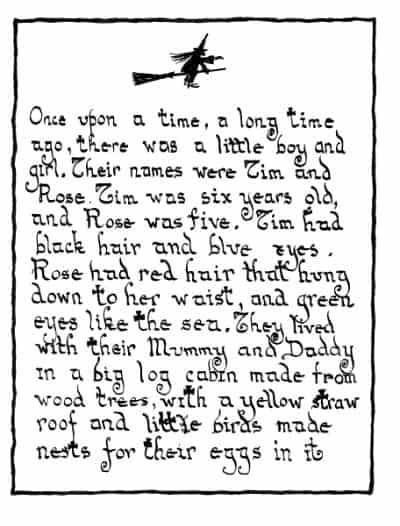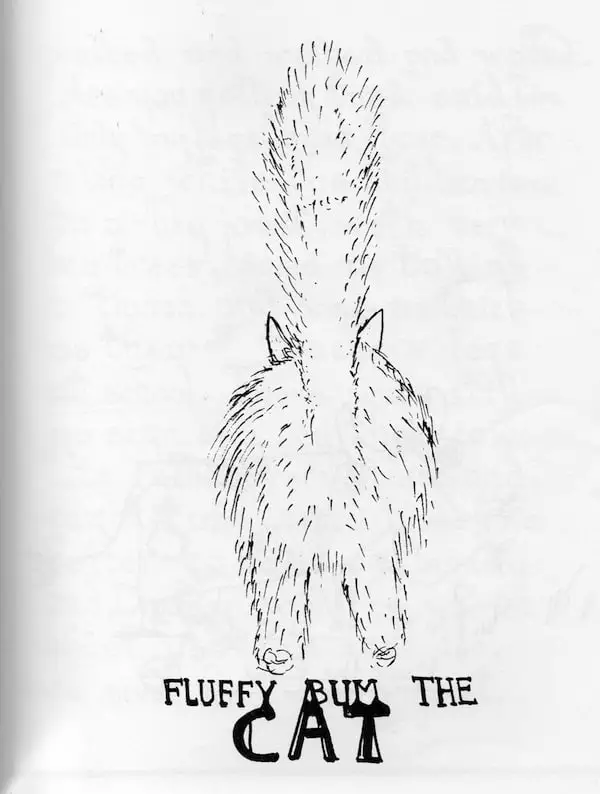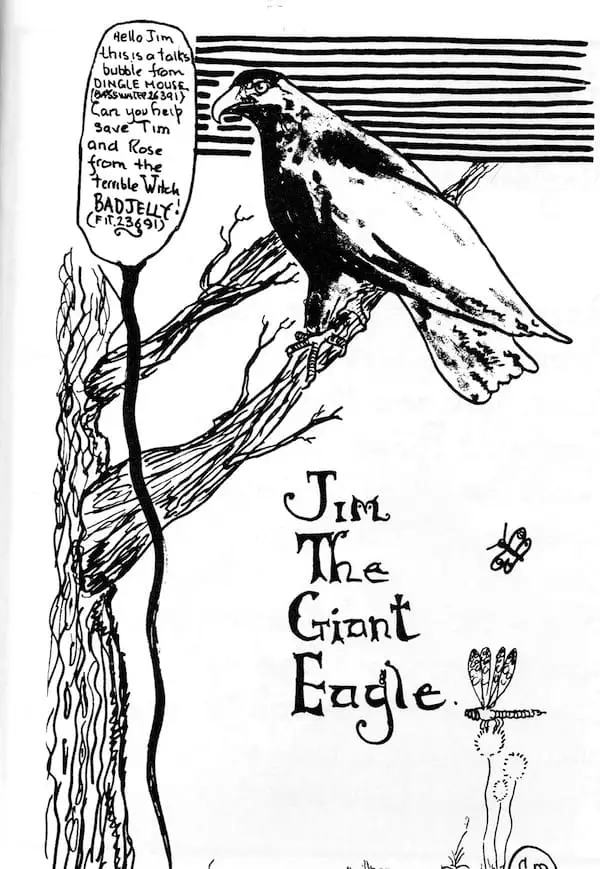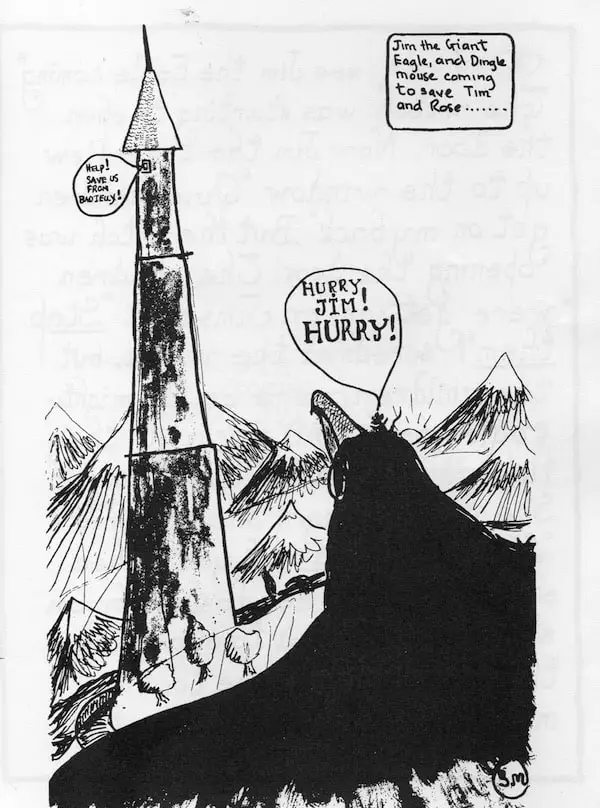“Badjelly The Witch” is better known as a radio play than as a picture book, at least to any New Zealand child of the 80s. There wasn’t much in the way of media entertainment back then, and I looked forward to Radio New Zealand’s Sunday morning children’s show with Constable Keith and Sniff the German shepherd, who was also voiced by Constable Keith. (I didn’t realise this until much later!)
This ‘duo’ issued safety warnings and life lessons to children but also offered quizzes where you could ring in (I once even got through!), and these gags and lessons were interspersed by a selection of radio plays, mostly British, the number of which I can count on the fingers of one hand. This meant that Badjelly the Witch, performed by the comedian author himself, was played pretty much every single Sunday morning to children throughout the country.
There was also a radio play featuring snails who spoke in deep, slow voices about lettuces, but I can’t remember the name of that. There was another about a train — I think it might have been “The Little Engine That Could”. As you can see, Badjelly the Witch was the radio play which left the strongest impression on my childhood. It is read by a British male narrator who chuckles at the jokes. The radio play underscores the fact that Milligan’s narrative voice is primed for oral recitation: Like fairytales such as Little Red Riding Hood of yore, and nursery rhymes with punchlines such as “wee wee wee, all the way home!” Badjelly The Witch is meant to be performed rather than recited.
BADJELLY THE WITCH, THE PICTUREBOOK
My copy has a purple cover and is full of line drawings rendered in ‘naive style’, epitomised best of all by the literal naivety of Milligan’s six year old daughter, who drew the opening double page spread. The author has handwritten the story himself and has fun with the font, turning words into pictures in places.

There is something particularly apt about the line drawings which display nothing in the way of ‘good draftsmanship’.
That’s not to say that professional illustrations don’t draw in this style. Here’s an example obviously done by a pro, retaining Milligan’s style:

Like the illustrations, this is not a ‘careful’ story. This is a narrative which makes fun of narrative. We even have God coming in at the end, in a lampoon of deus ex machina. There is no moral. Badjelly The Witch follows classic myth form and draws its influence from various sources, but there is no moral lesson. No significant anagnorisis. Pure fun. So why not have fun with the drawings, too? You won’t easily find a ‘serious’ illustrator who introduces the cat with the back, tail-up view, but that’s what Milligan does.

A professional illustrator would most likely introduce Lucy the cow wearing a straw hat, since that becomes her identifying signature (learned later in the story), but Milligan doesn’t bother with such details. There is no playing with perspective — aside from the cat, who is presented backwards, all characters are face on or side on, which always lends a folkart vibe to a picturebook. Jim the Eagle is the first character we see depicted in semi-realistic style.

The following illustration is a landscape of the castle with the eagle’s body in the foreground. This illustration shows an individual and unique composition.

In short, it’s a hodge podge affair.
And this is the thing about stories in which characters go on a journey. They meet lots of characters, none of whom are related to each other, and these stories tend to be quite fragmented, as a category. Hell, why not the illustration style, too?
INFLUENCES
- The Wizard Of Oz — the mythical journey along a ‘path’ (through the forest etc.), the evil witch, and the tin lion, which feels like an amalgamation of the tin woodman and the lion of L. Frank Baum
- Enid Blyton — especially when it comes to alliterative, onomatopoeic sounding names such as ‘Binklebonk’. The escape from the castle is similar to the first chapter of The Wishing Chair.
- Fairytales — the journey into the forest, the pastoral scene (house with a thatched, straw roof), the importance of the cow to the family’s fortune (a la Jack and the Beanstalk), brother and sister huddling together in terror as they are about to be eaten (Hansel and Gretel), asking after a cherished thing who has run away (The Gingerbread Man)
- Bible stories — in Badjelly the Witch we even have God as a character
- Like Roald Dahl, Spike Milligan finds humour in casual putdowns based on somebody’s physical appearance — the children’s teacher apparently has ‘legs like tree trunks’, and also in humiliating revenge (the giant is down-troued and runs off to Barebottom Land). This was a particular kind of adult male humour of the mid-twentieth century — few female writers then, or today, make jokes about a giant whose eyes go all around his head ‘so he can see the pimples on his back’. Milligan also seems to find sausages very funny.
(Perhaps female comedian writers for children are just not getting published as often. Even today, the big name comic children’s writers tend to migrate from celebrity world, e.g. David Walliams or from a television background e.g. Mo Willems, Jon Klassen. While the publishing world is relatively open to diversity, the same can’t be said for broadcasting and showbiz.)
STORY STRUCTURE
SHORTCOMING
The iterative portion of the narration tells us who the main characters are, where they live, about their pets. The story switches to singulative at the inciting incident: One day they went out to the barn to milk Lucy, “but Lucy was gone!” They won’t have any milk unless they find Lucy, so they set off on a quest to find, quite specifically, a cow. This is also known as a ‘Grail Quest’. (The more concrete the goal, the more like a Grail Quest it is.)
DESIRE
They want to find their cow so they can continue to have milk on their eggs. (I’m not sure who does this, unless they’re talking about scrambled eggs?)
OPPONENT
The children meet various opponents along the way, but the BIG BADDIE is of course the Wicked Witch, a trickster character who easily pops the stupid children into a bag.
More than in a myth for adults, these children meet a lot of allies along the way — characters who genuinely help them. This reduces the opportunity for conflict, which we keep being told audiences need, but Milligan still manages to insert conflict by means of humour. For instance, Rose doesn’t know which end of the jovial worm is his head, so the worm will put on a hat. They meet a shark crossing the river (another mythical symbol) and because the worm is the strongest worm in the world, the shark is bopped on the nose and takes off to the Shark Nose Hospital. In this world, every type of establishment exists, as and when you need it.
PLAN
To walk along the road into the forest until coming across Daisy the cow. They will ask everyone they see if they have seen a black and white cow wearing a straw hat. If they are friendly and jovial, people will help them. And this is exactly what happens.
BIG STRUGGLE
The children face a number of big struggles and face near death when they are locked in the castle. The witch plans to eat them with peanut butter for breakfast.
ANAGNORISIS
When the parents are scared of the eagle, carrying Lucy and the children to safety, it is clear that the children have achieved a sort of maturity via their trauma in the wild, whereas the parents who remained at home are still locked in fear.
NEW SITUATION
They ‘lived happily ever after until next time’.
